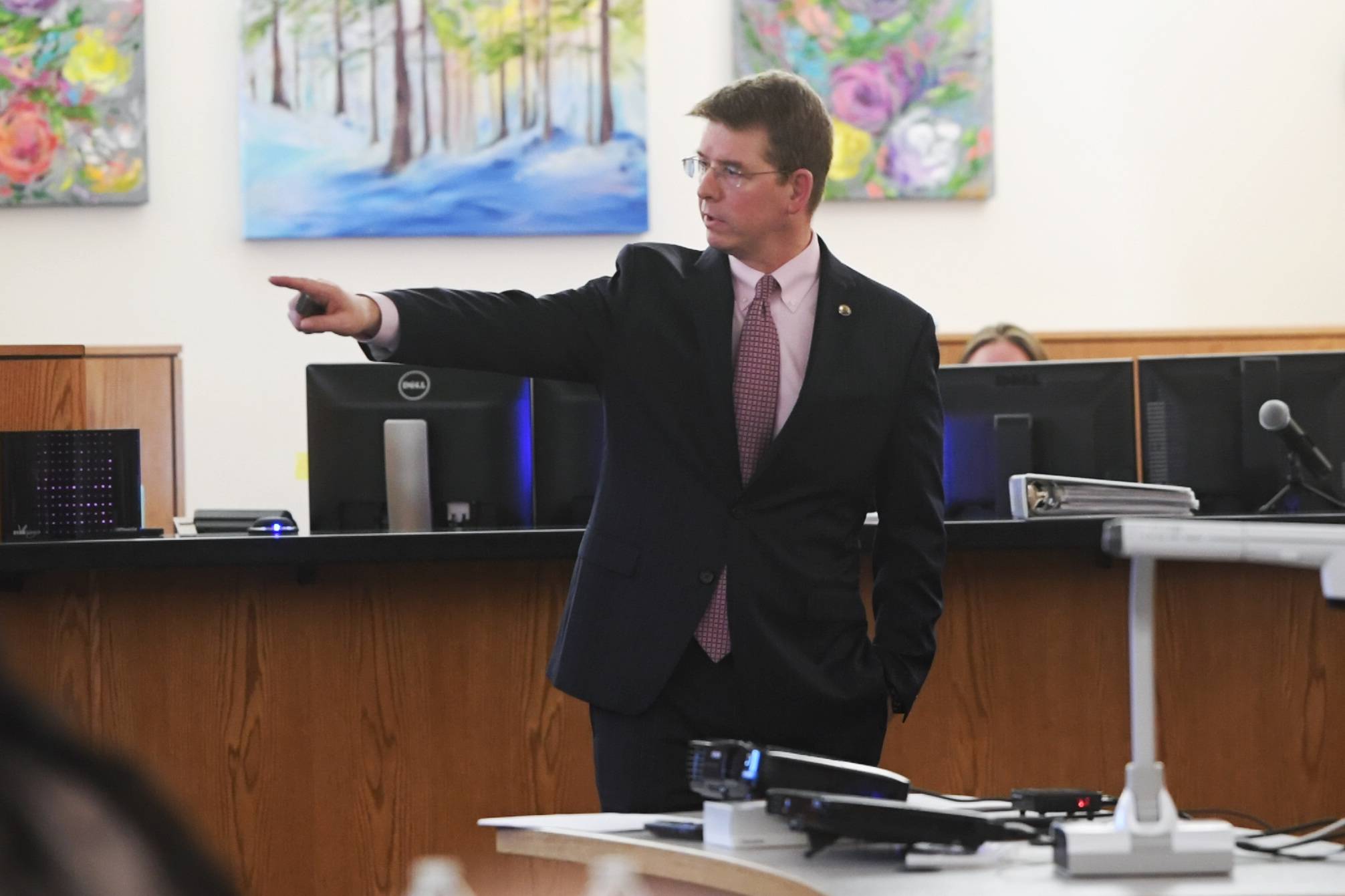The defense and prosecution presented their closing arguments Monday, wrapping up weeks of witness testimony in the trial for a 2015 double murder.
The trial of Laron Carlton Graham, 42 — charged with two counts of first-degree murder for the deaths of Elizabeth Tonsmeire, 34, and Robby Meireis, 36 — has moved on to its next stage. The jury broke to deliberate around 2 p.m. Fourteen jurors heard the case, and two were let go Monday, leaving 12 to decide verdict.
“The defendant admitted to James LeBlanc-Tweedy that he shot Robby Meireis and shot Elizabeth Tonsmeire,” prosecuting attorney John Darnall said during closing arguments. “Dead men don’t tell tales. That’s what the defendant told Phillip Drummer, when he inquired about the details of the murders of Robby Meireis and Elizabeth Tonsmeire.”
Darnall went on to lay out the timeline of events, from when Graham was hanging out doing drugs at Tonsmeire’s apartment Friday night, to the last time Meireis was seen alive on Saturday, to when Meireis’ phone user activity abruptly stopped, to John “Kelly” Tonsmeire’s frantic 911 call on Sunday. Darnall illustrated the means, motive and opportunity.
“Dislike is a motive. Robbery is a motive,” Darnall said. “Maybe it’s just because Robby Meireis was a racist, skinhead bigot.”
Darnall also pointed out that Graham had taken pictures posted to Facebook holding a weapon that could be a 10mm Glock, one of the types of murder weapons crime lab technicians thought was likely to be used in the killing, and that Graham would have been alone with Tonsmeire and Meireis Saturday afternoon.
Graham would have wanted a refund for bad drugs sold to him by Meireis, Darnall alleged. In an alleged confession note written to neighboring inmate LeBlanc-Tweedy, Graham allegedly said that upon asking Meireis to refund his purchase, Meireis told him to get out and called him the n-word. Graham shot him in the face, LeBlanc-Tweedy alleges the confession said.
“For a man of color, raised in the south, to hear that racial epithet, caused the defendant to snap and shoot Robby Meireis,” Darnall said.
[Defense calls final witnesses before resting, suggests another suspect in killing]
Darnall then outlined some of the details that LeBlanc-Tweedy gleaned from Graham’s alleged confession, including the amount of money Graham allegedly stole from Meireis and the type and quantities of drugs Meireis had.
Defense attorney Natasha Norris passionately countered against Darnall’s straight-line progression of evidence, attacking witnesses and calling into doubt their credibility, particularly LeBlanc-Tweedy.
“There is no forensic evidence linking Mr. Graham to the crime. No DNA, no fingerprints, no footprints,” Norris said. “The state wants you to believe their botched facts when they want you to, and not when it’s inconvenient for them.”
LeBlanc-Tweedy, charged with sexual abuse of minor in 2014, was incarcerated in Lemon Creek Correctional Center in 2016, at the same time as Graham. Housed next to each other, LeBlanc-Tweedy and Graham frequently exchanged notes, as Graham was reportedly paranoid that verbal conversations were being recorded.
“Mr. LeBlanc-Tweedy claims that on Feb. 23, 2016, Mr. Graham passed over a note confessing to the two murders,” Norris said.
Norris went on the point out that LeBlanc-Tweedy did not immediately reproduce the note (the original was allegedly thrown away in a toilet) to show authorities, as he had initially claimed, but the next day. She also pointed out a number of inconsistencies with the note and factual details that LeBlanc-Tweedy had gotten incorrect.
“He assumed they were dating. They were not dating,” Norris said. “He assumed that Mr. Graham was angry about fake China White (a nickname for a brand of heroin). Mr. Graham used meth.”
Norris also turned her guns on the Juneau Police Department, attacking their methodology in investigating the case, and questioning their evidence. Norris claimed the JPD failed to return to talk to neighbors to gather more data, failed to inspect the dumpster at the Admiralty apartments, failed to call for assistance from the Alaska State Troopers or Alaska Bureau of Investigation, and failed to develop other suspects, including Jose Delgado, who she termed suspicious in his repeated visits to the crime scene.
“Delgado got out of the car taking pictures until Officer Phelps told him to go away, that it was a crime scene. That is bizarre behavior,” Norris said. “Then they find out that he threatened Mr. (Zachary) Stubblefield with a gun to the face and made what Stubblefield thought was an admission (to the murders).”
“The only fair and just verdicts in the case is not guilty and not guilty,” Norris said.
Darnall rebutted her argument, saying that while LeBlanc-Tweedy’s recollection might not have been word perfect, it was fundamentally sound. Darnall also said the timeline of Meireis’ death, placing it at roughly 1:10 p.m. in the afternoon, was logical.
“Robby Meireis’ phone went dark at 1:10 p.m.,” Darnall said. “He wasn’t asleep. He was taking the big nap. He was dead.”

